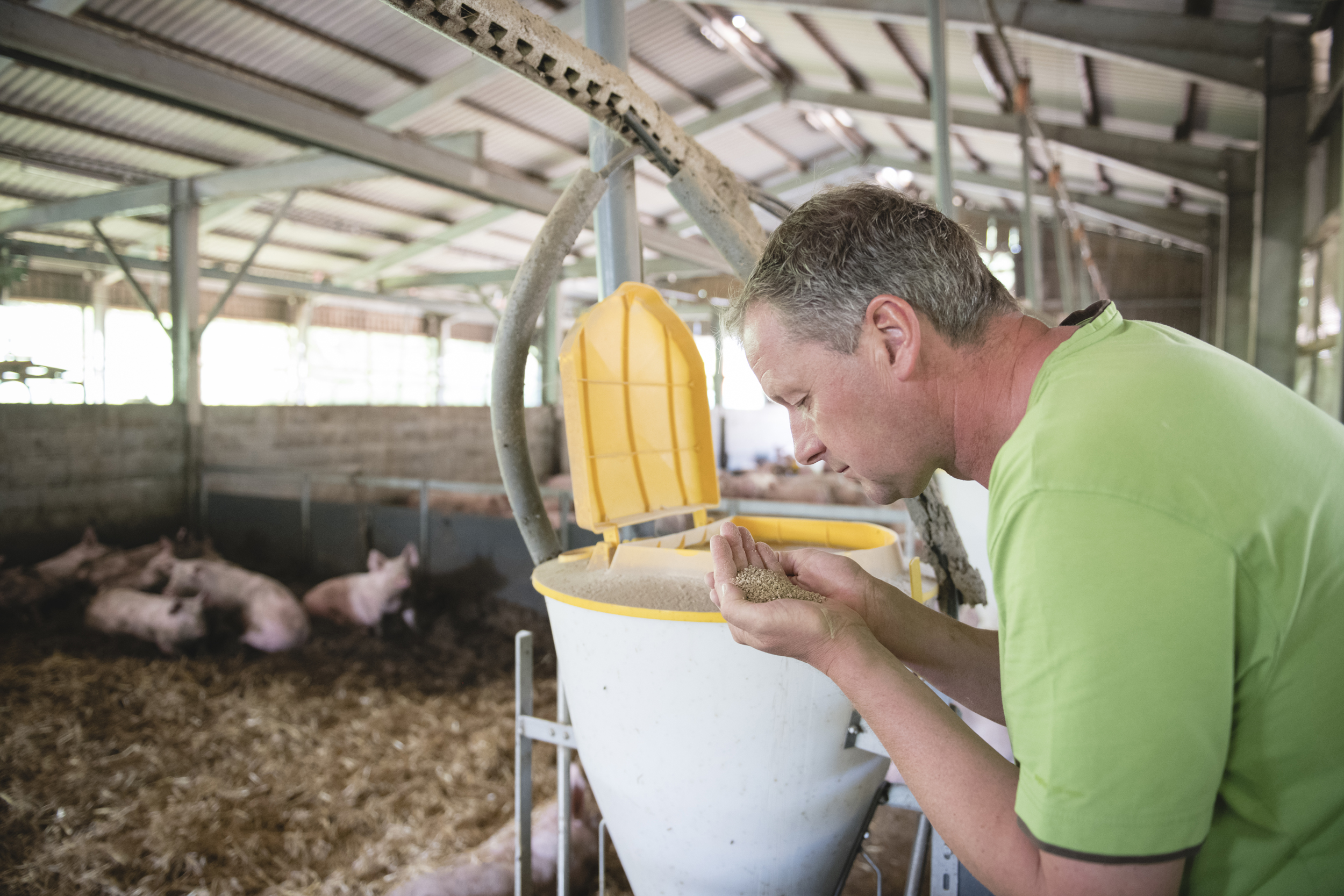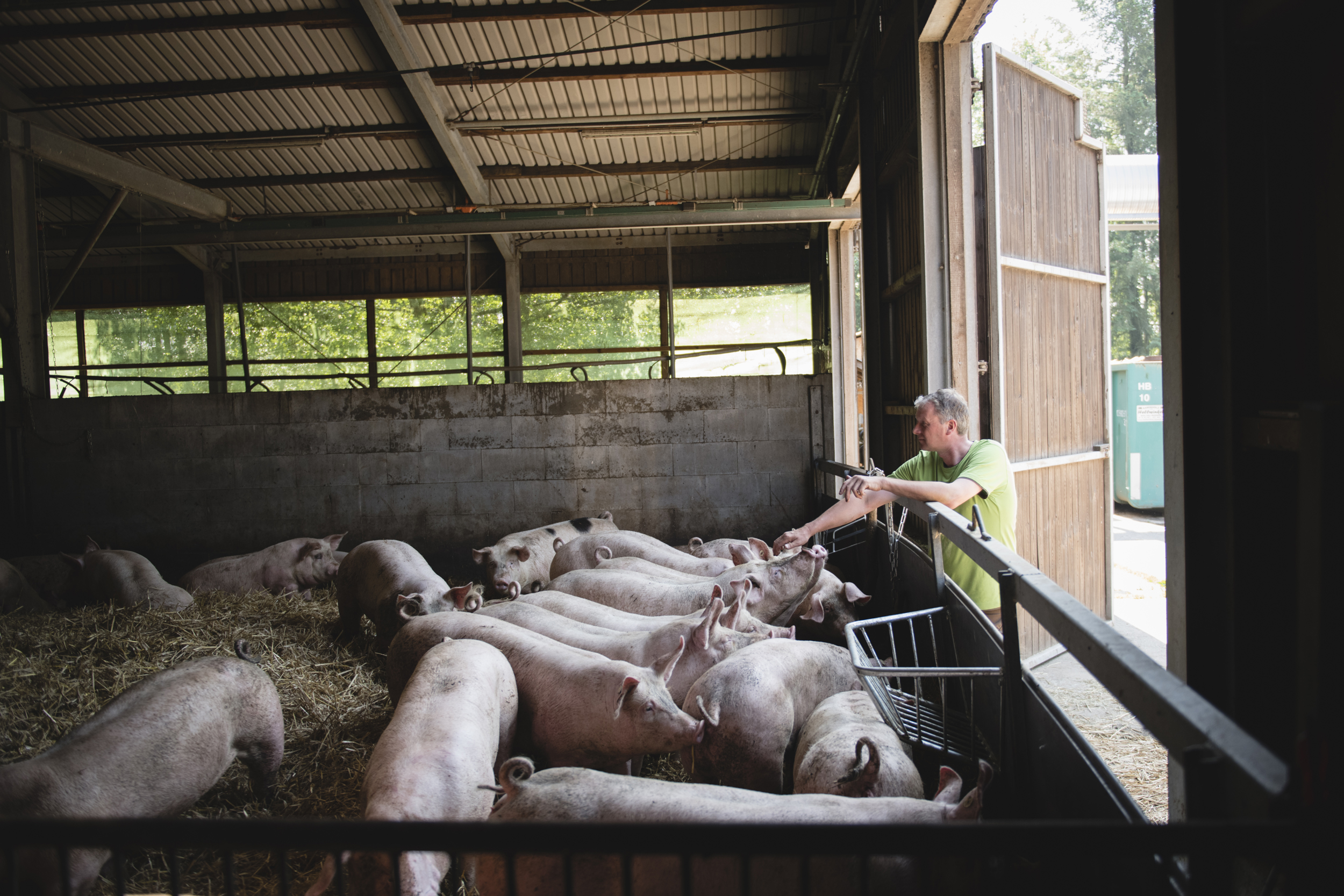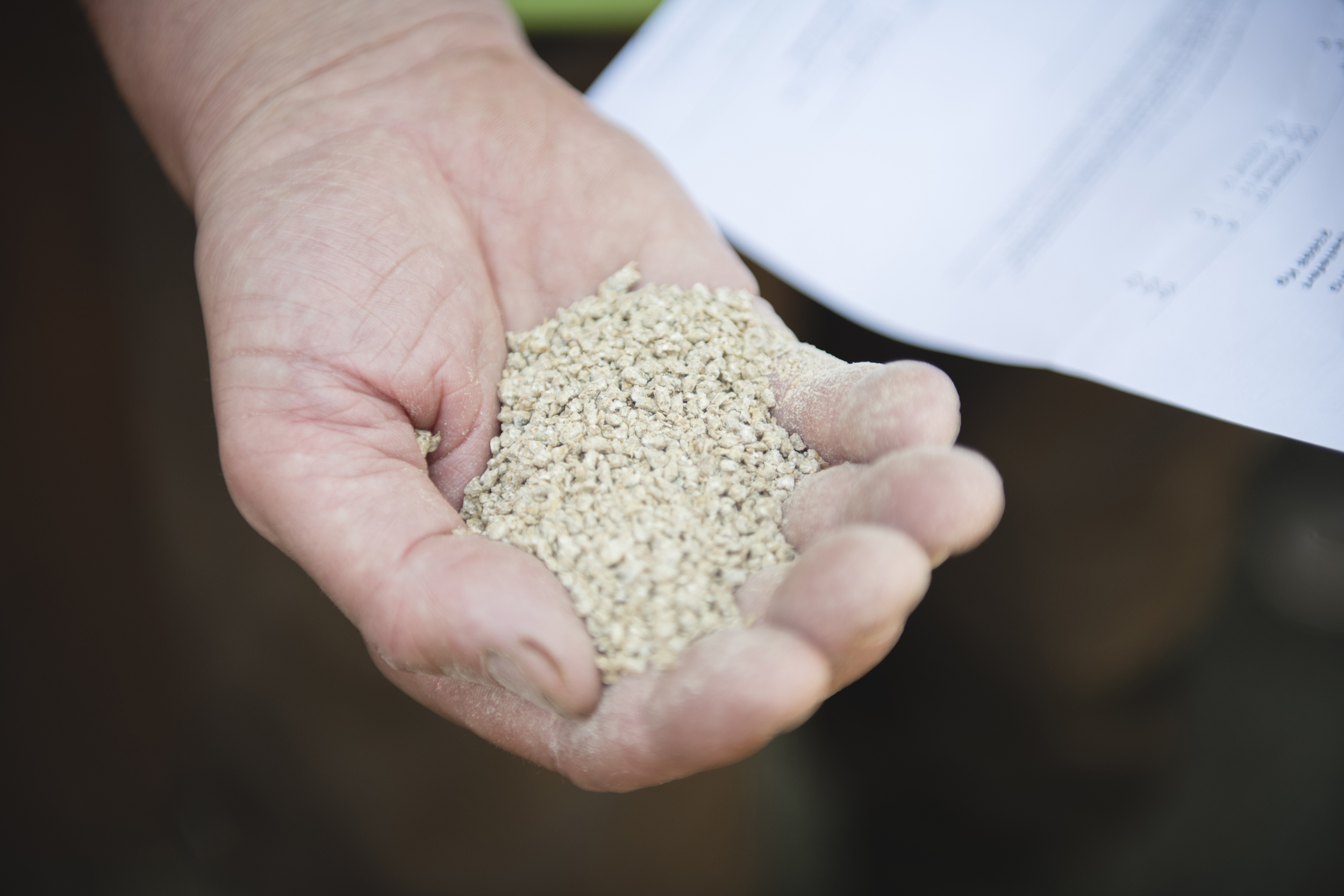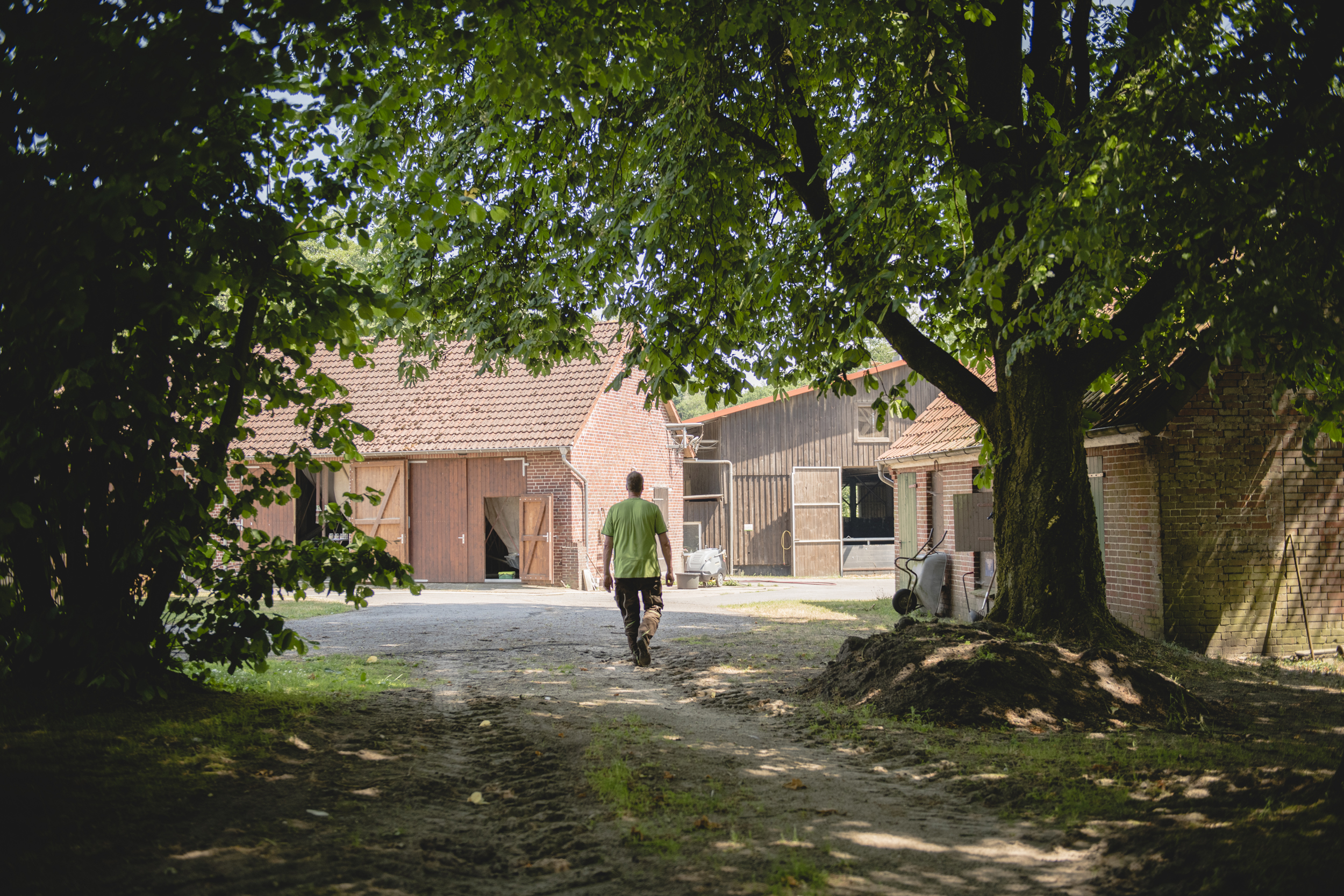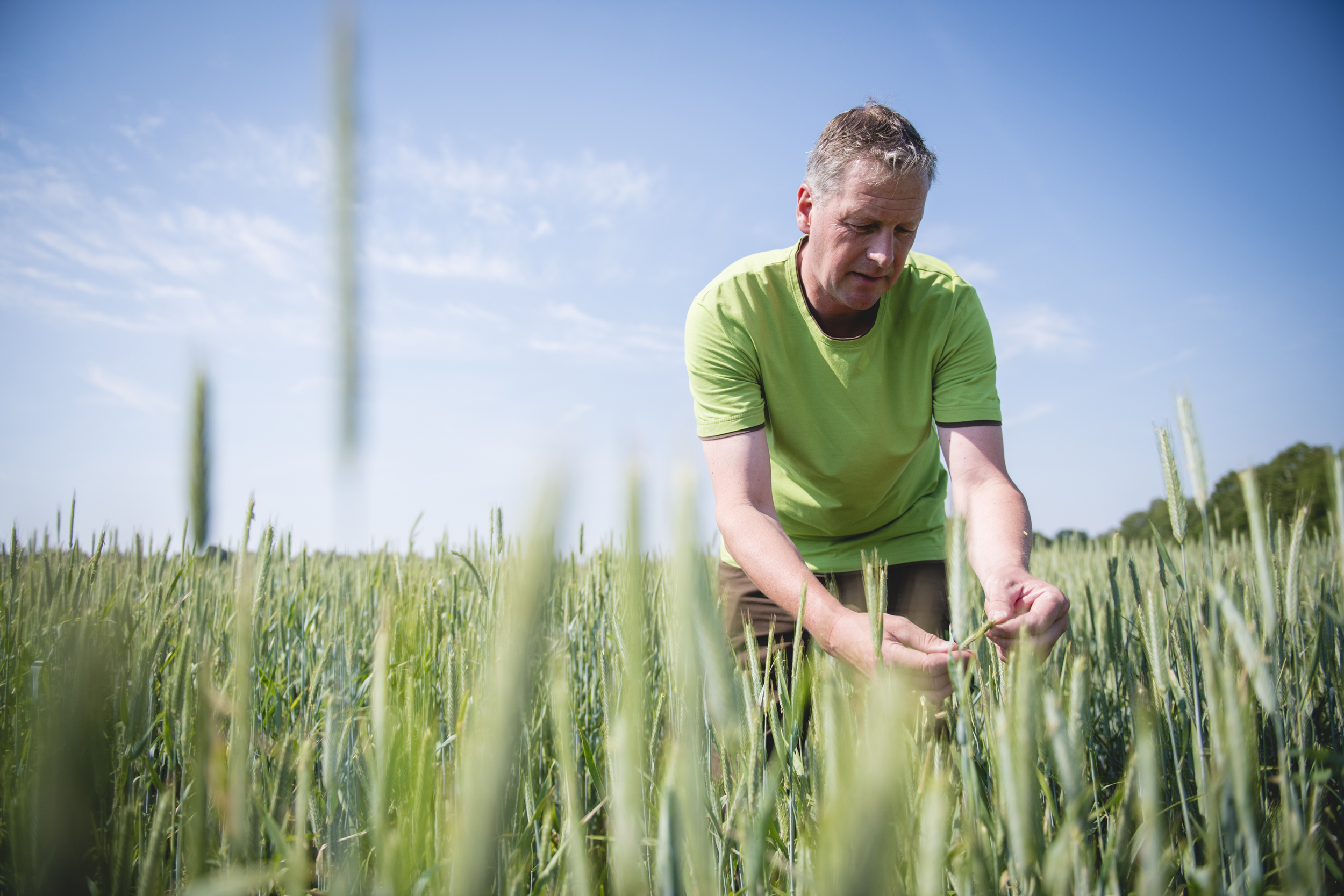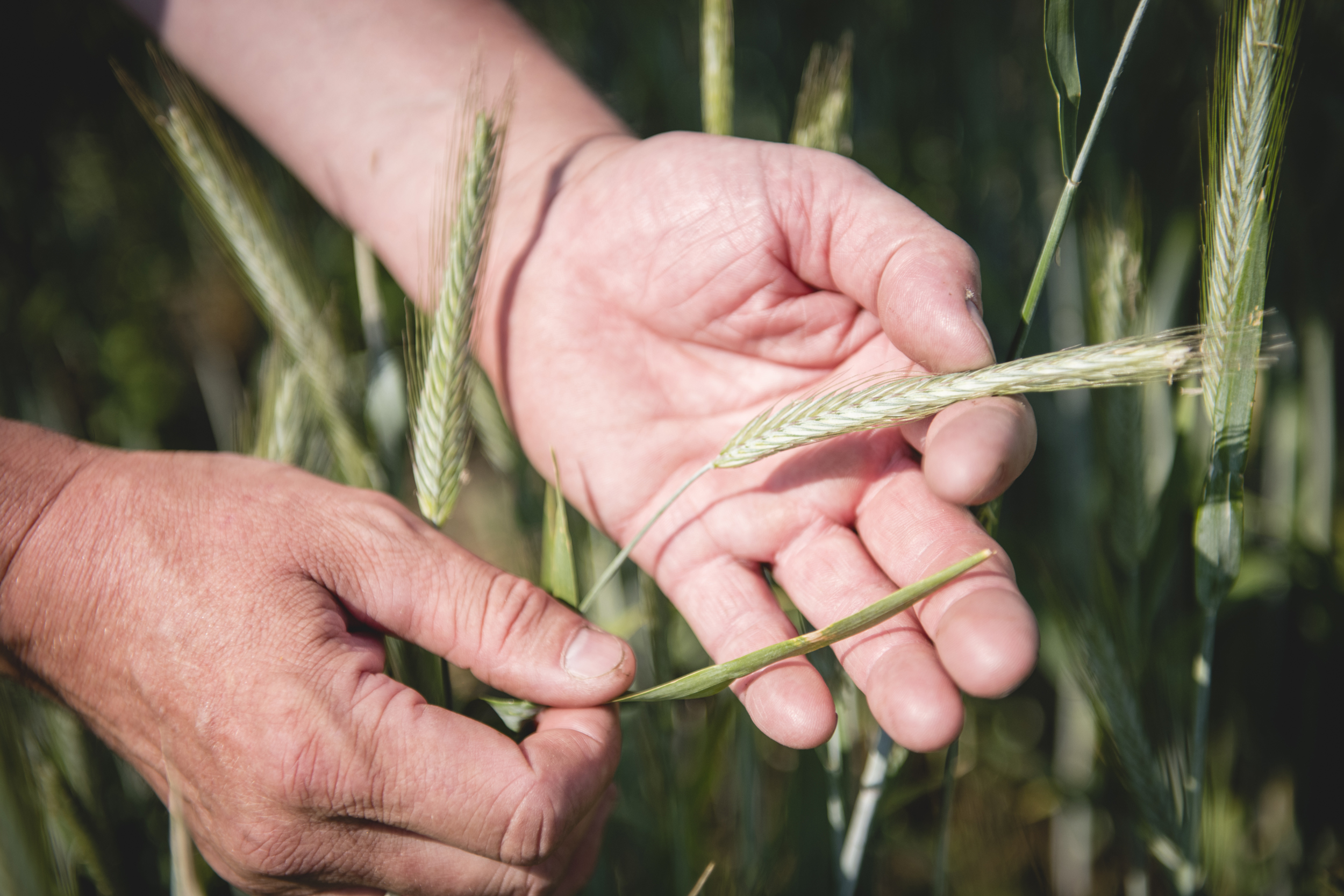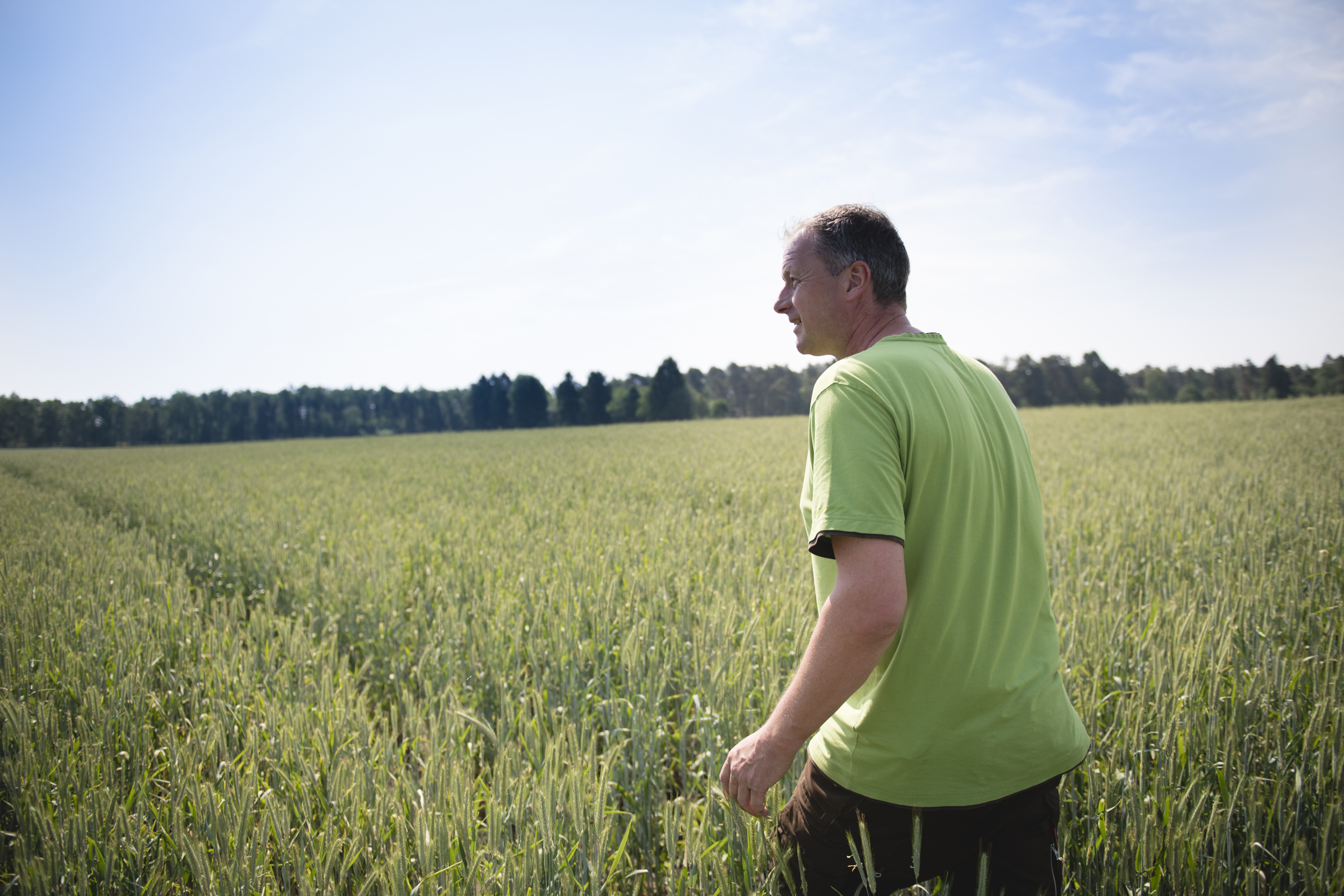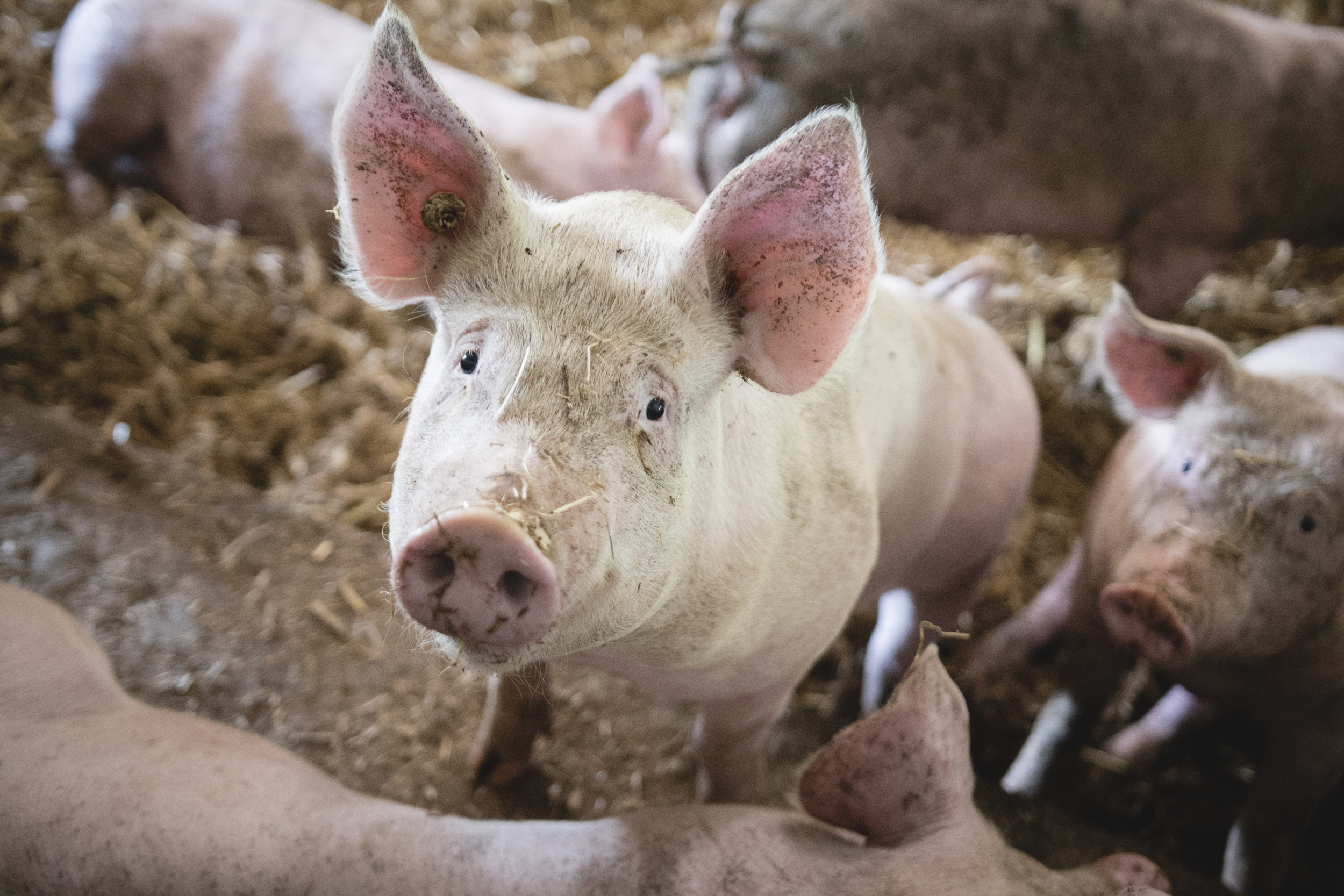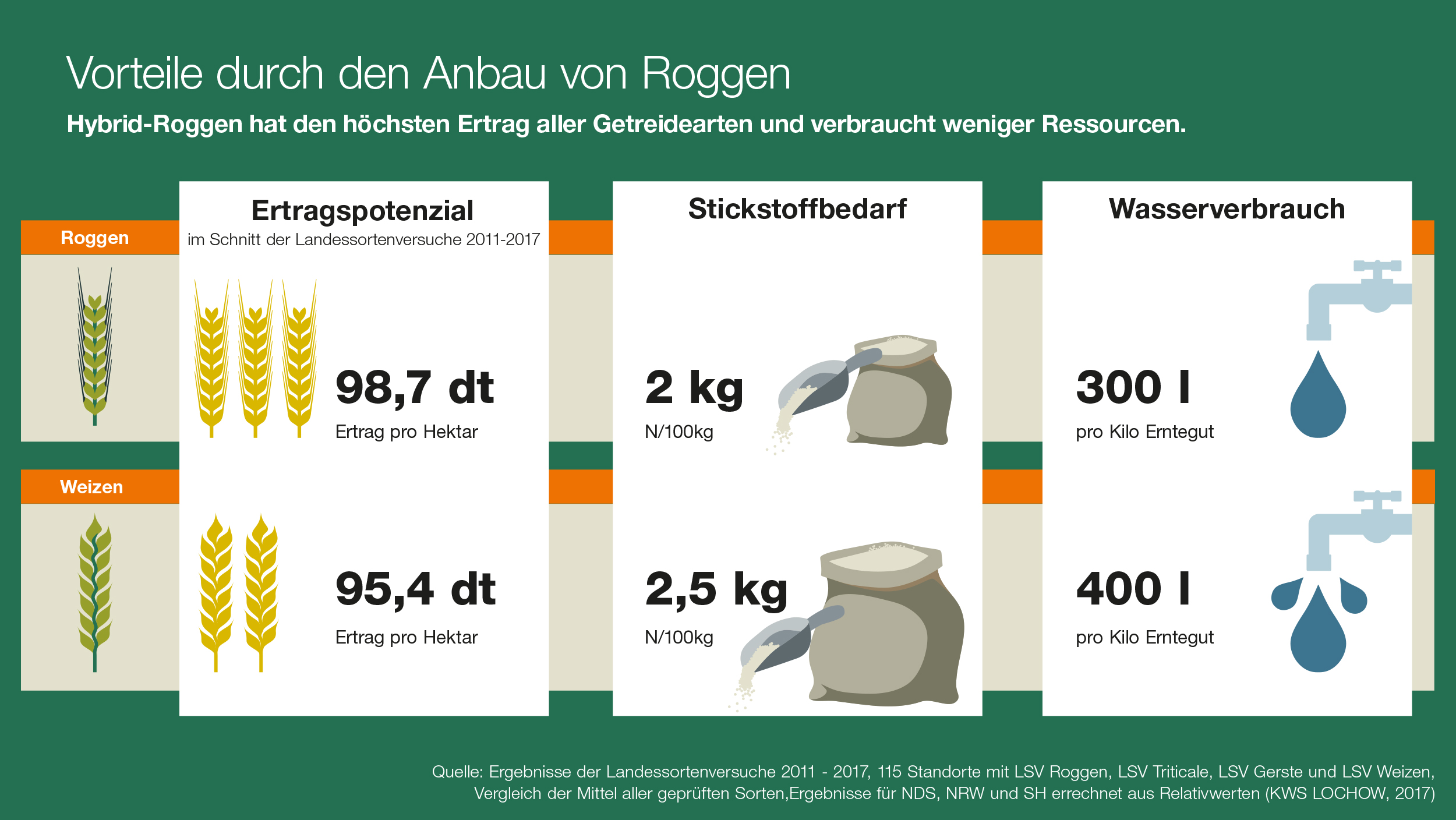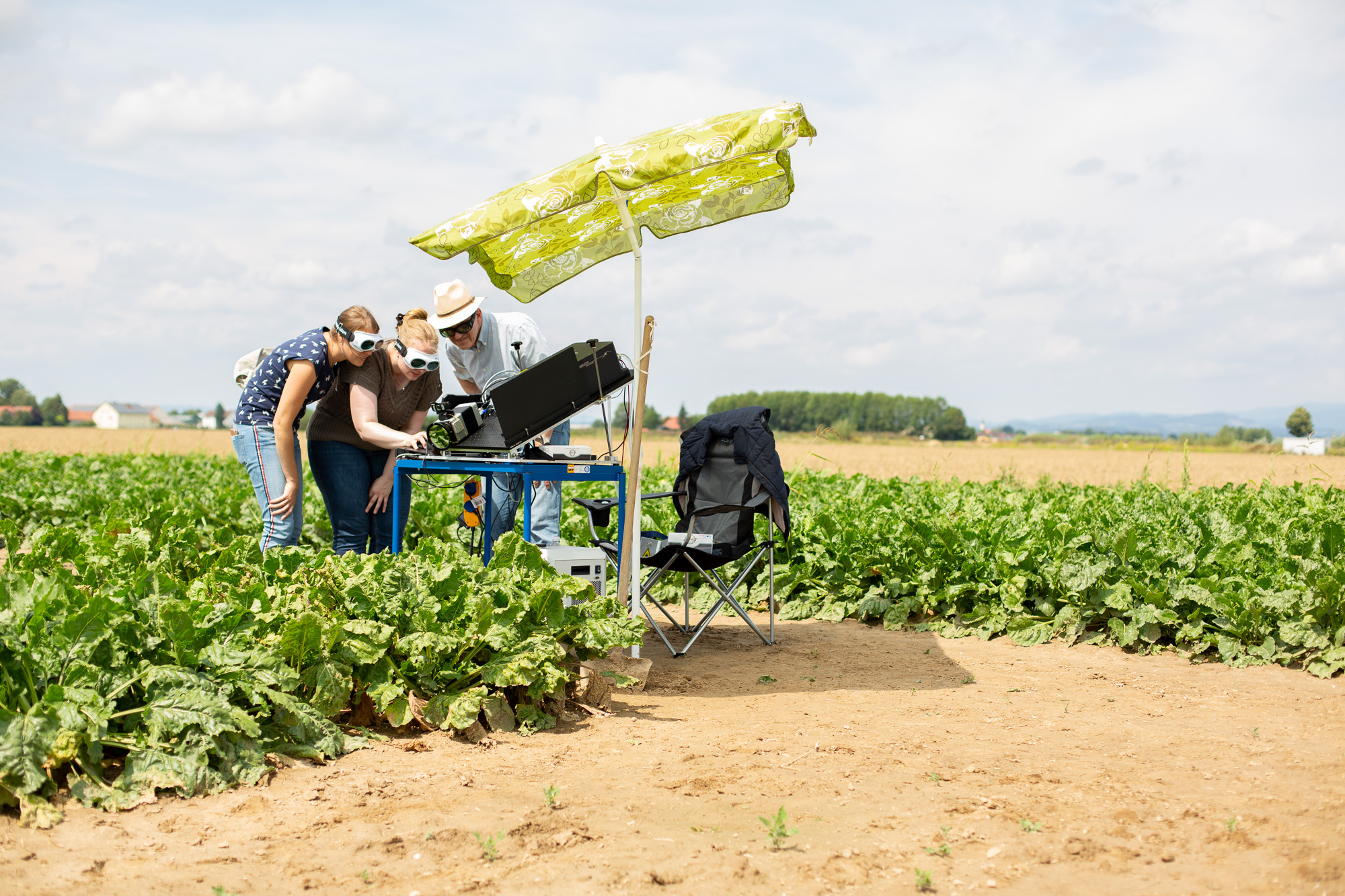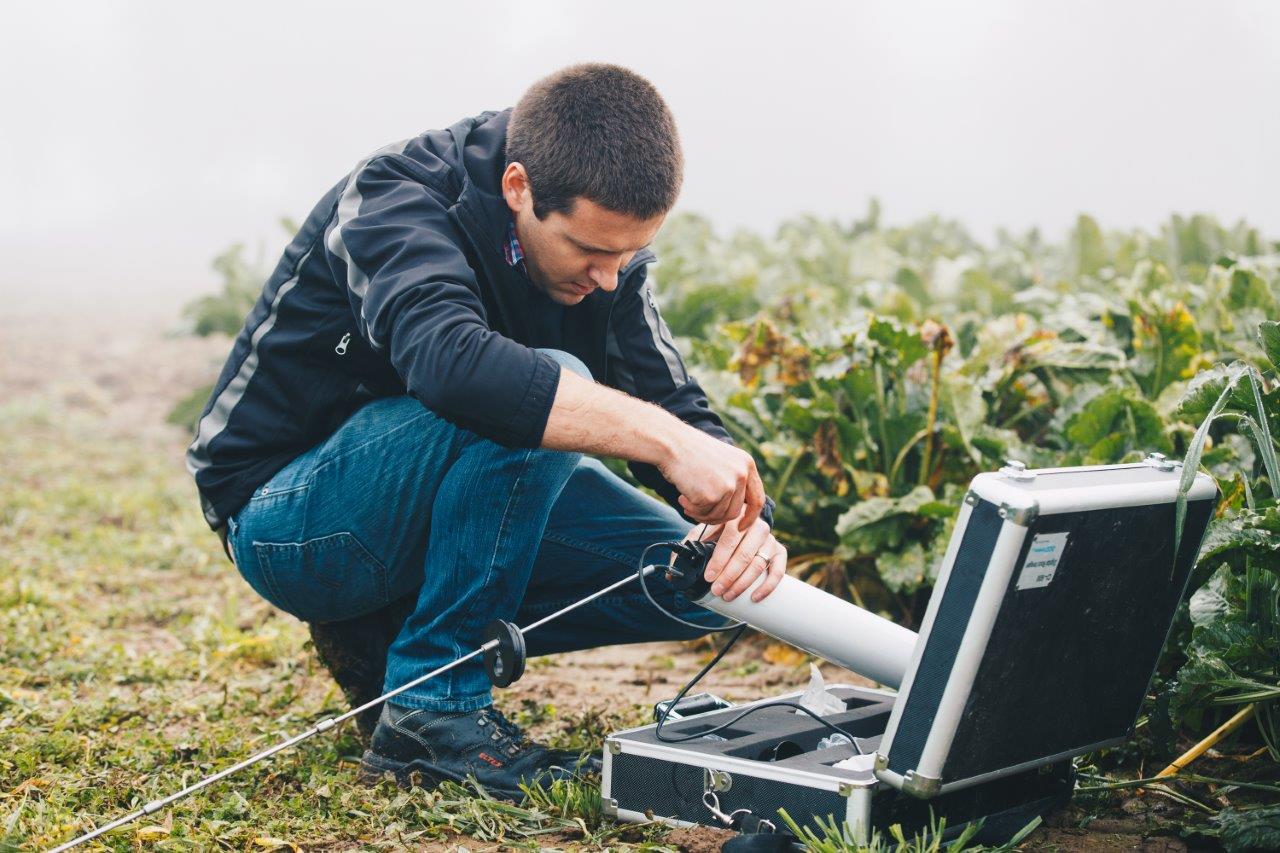How farmers improve pig fattening with rye
Animal welfare in pig fattening
He understands why some colleagues can’t or won’t adopt his principles in pig fattening – and urges them all the more to opt for his preferred cereal. After all, nothing has been the same since he significantly increased the rye content. “You can make a quick contribution to animal welfare by using rye as fodder,” he says. “By contrast, changing how you keep animals as a whole takes a lot longer.”
von Felde can hear that his pigs are doing well – and he feels that in the midst of his herd. The farmer regularly mingles with his animals to check that everything is as it should be: “You have to spend a lot of time with your animals. Then you notice a lot of things.” And von Felde has numbers to prove that rye does more than improve animal welfare: The lean meat proportion has soared from 58 to 62 percent and the gain in weight has increased from 810 to 900 grams a day.
“Stand firm, look far ahead and keep moving” – that was a slogan that used to adorn one of his farm buildings, says von Felde. The combination of tradition and modern methods, of animal welfare and efficient farming is now his trademark. This unpretentious farmer is even a little proud that TV teams visit his farm as a result: “I’m very grateful for that!”
Research on pig feed: greater animal welfare thanks to rye
Rye could radically redefine and improve pig feeding. A joint research project between the scientific and business communities aims to make a contribution to that. The German Ministry of Food and Agriculture is supporting the project* with funds from a government innovation program.
Discover more
Your contact

